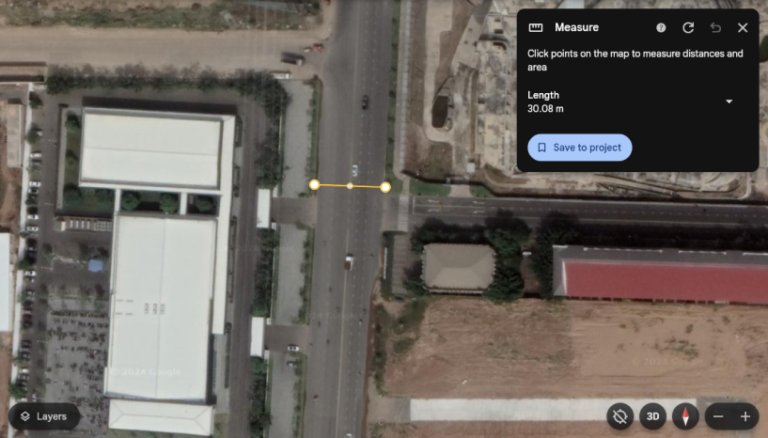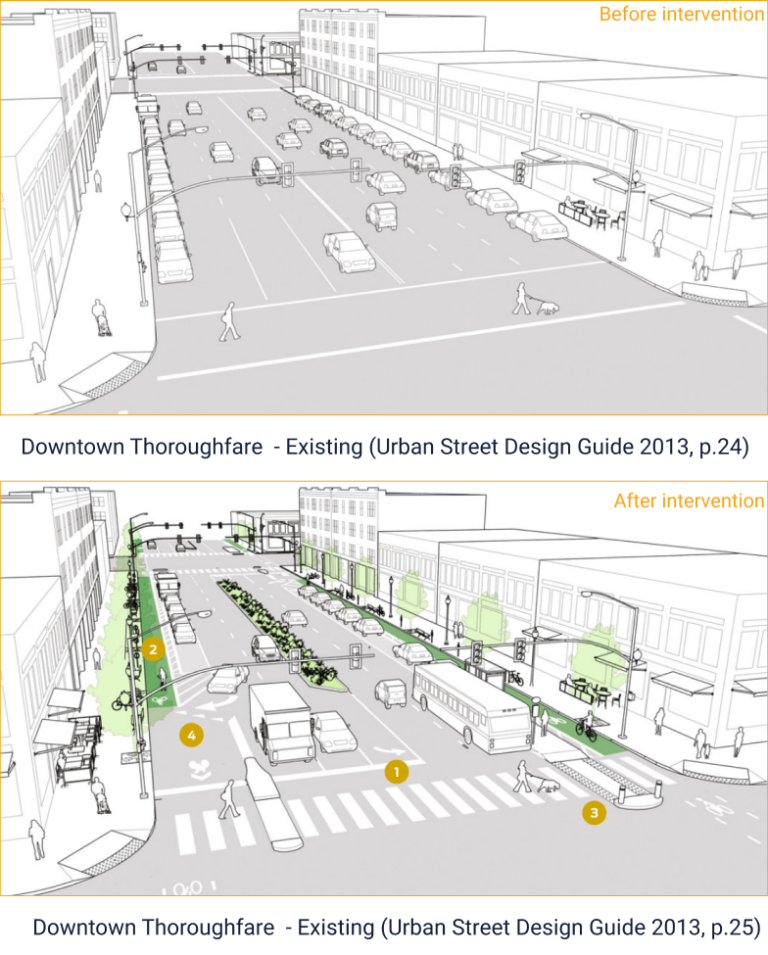UNDP Cambodia reports that an average of 5.4 people die daily from traffic accidents, making it the sixth deadliest cause of mortality in the Kingdom. Nearly 50% of injuries resulting from these accidents are fatal or serious (2014-19), with Cambodian youth suffering the most severe injuries.
UNDP Cambodia identified two major factors contributing to traffic accidents in Cambodia: road users’ behaviors (such as alcohol and drug consumption, speeding, traffic rule violations, and using phones while driving) and the surrounding environment (including road conditions, weather, and infrastructure).
In light of recent traffic incidents that have sparked discussions about road safety in Phnom Penh, particularly the tragic death of a young Cambodian-French rapper, this blog explores both human and infrastructural factors contributing to such incidents.
The incident occurred on an eight-lane thoroughfare with a total width of 30 meters near Borey Peng Huot, Sangkat Chakre Angre Krom, Khan Meanchey, at 1:20 a.m. Security camera footage shows the victim driving head-on into a car turning off the main thoroughfare.
Both drivers seemed unaware of each other. The car driver, while turning off the thoroughfare, crossed the road and drove in the opposite direction, causing the incident. This maneuver appears to have caught the victim off guard while traveling at a considerable speed at night. The car driver violated traffic rules, as turning off the thoroughfare requires making a right-angle turn and ensuring the road is safe to cross.
Regarding infrastructural factors, the thoroughfare is hostile to drivers due to its eight-lane design. This road has all the characteristics of a “stroad”.

What is a Stroad?
A stroad is a wide, high-speed roadway lacking pedestrian and cycling features. The term “stroad” was coined by Charles Marohn from Strong Towns in 2011. The nature of a stroad imposes unsafe driving conditions due to multiple lanes encouraging high-speed traffic. Drivers often need to cross multiple lanes at high speeds, increasing the risk of collisions with oncoming traffic. High-speed crashes are the leading cause of fatal and severe traffic accidents.
Stroads are not only dangerous for drivers but also detrimental to the vibrancy of the street itself. They discourage active modes of mobility in favor of accommodating higher vehicle volumes.
The Solutions:
People adapt to their conditions. Changing streets changes behavior, meaning that a street designed for the fastest and worst drivers may very well create more drivers who feel comfortable at faster and more unsafe speeds. A proactive approach uses design to affect desired outcomes, guiding user behavior through physical and environmental cues. – (Design Controls | National Association of City Transportation Officials, 2015)
By imposing traffic calming measures, cities can make roads safer. In many cases, such measures reduce vehicular traffic. Fewer vehicles mean fewer road hazards. These measures also reinforce the “induced demand” concept in transport planning—expanding roadways to accommodate higher traffic capacity ultimately leads to more congestion. Traffic calming measures aim to make roads safer while also reducing congestion.
Many cities have implemented temporary traffic-calming solutions, such as speed bumps, road signage, street art, lane narrowing, textured road surfaces, and speed cameras. Once drivers and locals observe the benefits of traffic calming, cities can proceed with more permanent changes, such as a road diet.
What is a Road Diet?
A road diet involves redesigning or reconfiguring an existing road by reducing or repurposing lanes that would otherwise be reserved for vehicles. A minimal road diet typically involves converting one or more lanes into a central turning lane for traffic in both directions. Road diets aim to reduce traffic speeds and redesign roads to accommodate pedestrians, cyclists, drivers, and public transit users within the same space. They also enhance the value of neighborhoods for businesses and residents.

How Can You Contribute to Road Safety?
It starts with you, the driver. Knowing and understanding traffic laws can make our roads safer. Assess your driving skills and avoid overspeeding. Spread road safety awareness among your family and friends, and always wear a helmet or seatbelt.
While we wait for improvements in road infrastructure, we can begin by changing our behavior today.
References
UNDP Cambodia. (2021). Road Traffic Accidents in Cambodia. In https://www.undp.org/cambodia/publications/road-traffic-accidents-cambodia. Retrieved January 8, 2025, from https://www.undp.org/sites/g/files/zskgke326/files/migration/kh/UNDP_KH_ROAD-TRAFFIC-ACCIDENT-REPORT.pdf
UPDATE: Police officer driver involved in accident that killed rap star RuthKo was ‘not intoxicated’, say police. (2025, January 6). Khmer Times. https://www.khmertimeskh.com/501619497/update-police-officer-driver-involved-in-accident-that-killed-rap-star-ruthko-was-not-intoxicated-say-police/
StreetLight. (2024, December 20). What is a StRoad, and why is it dangerous? https://www.streetlightdata.com/what-is-a-stroad/
StreetLight. (2024a, December 20). What is a road diet? The data behind how they work and how to implement them. https://www.streetlightdata.com/what-is-a-road-diet-the-data-behind-how-they-work-and-how-to-implement-them/
StreetLight. (2024a, October 1). What is traffic calming? https://www.streetlightdata.com/what-is-traffic-calming/
Marohn, C. (2023, September 6). The Stroad. Strong Towns. https://www.strongtowns.org/journal/2017/10/30/the-stroad
Steuteville, R. (2023, April 4). Seven stroads that have been converted to streets. CNU. https://www.cnu.org/publicsquare/2022/06/21/seven-stroads-have-been-converted-streets
Urban Street Design Guide. (2013). In Island Press/Center for Resource Economics eBooks. https://doi.org/10.5822/978-1-61091-534-2
What Is Induced Demand? (n.d.). Planetizen. Retrieved January 9, 2025, from https://www.planetizen.com/definition/induced-demand
Design Controls | National Association of City Transportation Officials. (2015, July 24). National Association of City Transportation Officials. https://nacto.org/publication/urban-street-design-guide/design-controls/